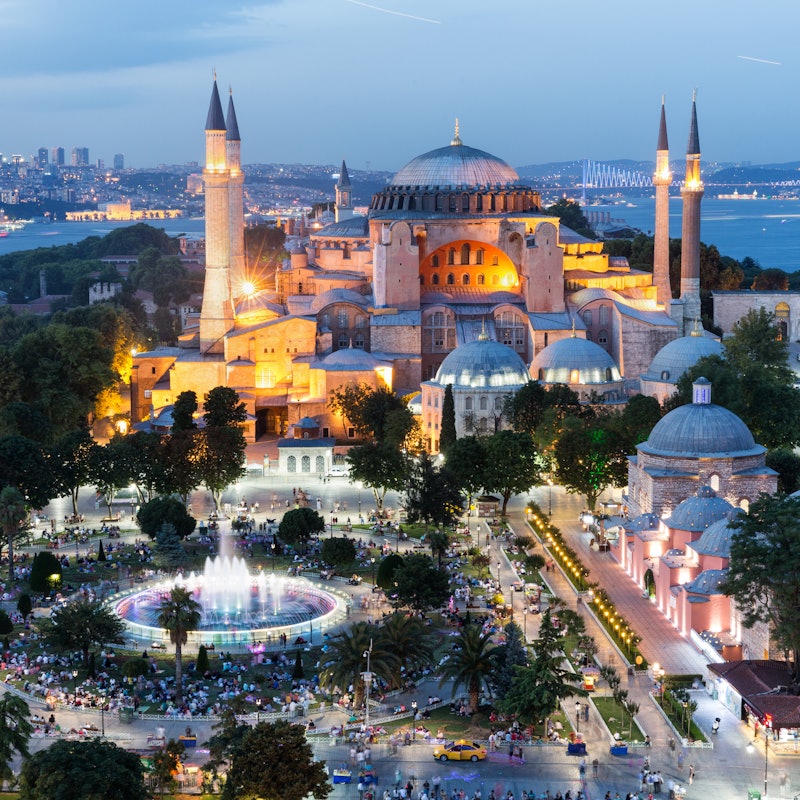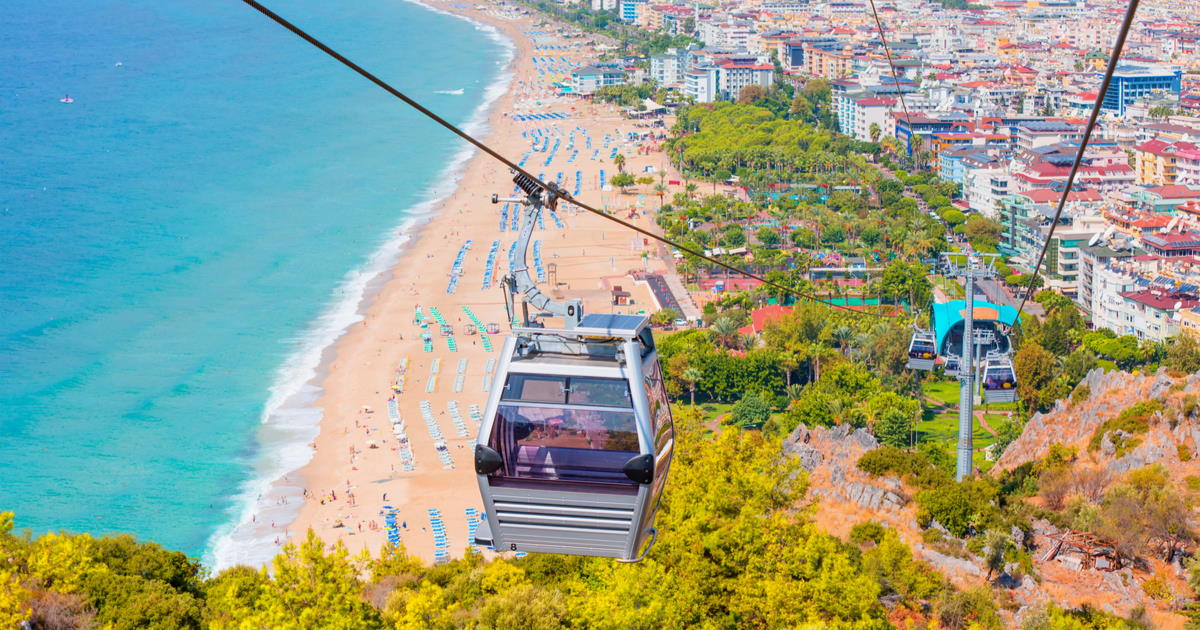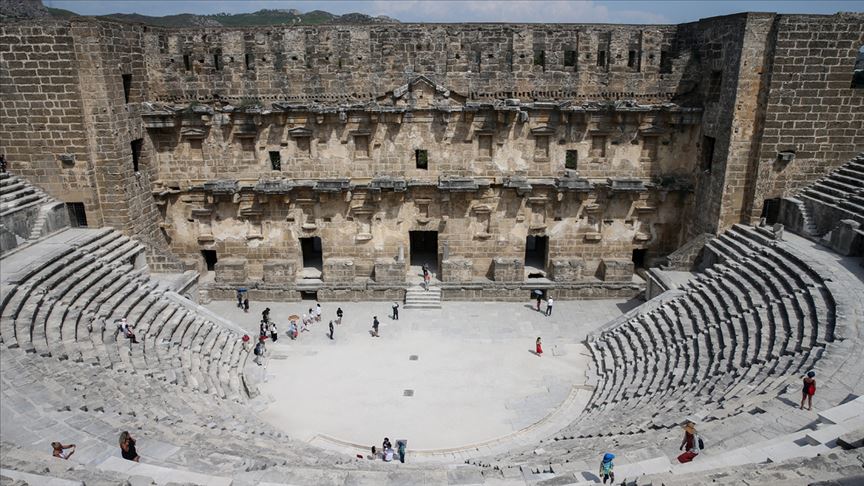1. Hagia Sophia( Aya Sofia)

Hagia Sophia is a UNESCO World Heritage Site in Istanbul, Turkey. It was built in 537 as the Greek Orthodox patriarchal cathedral, later becoming a Roman Catholic cathedral, then a Sunni mosque, then a museum. It currently functions as a mosque.
Hagia Sophia or Saint Sophia may also refer to:
- The Greek for Holy Wisdom, a concept in Christian theology
2. Cappadocia

Cappadocia is a historical region of Asia Minor, in modern Turkey.
Cappadocia lies in eastern Anatolia, in the heartland of what is now Turkey. The relief consists of a high plateau over 1000 m in altitude that is pierced by volcanic peaks, with Mount Erciyes (ancient Argaeus) near Kayseri (ancient Caesarea) being the tallest at 3916 m. The boundaries of historical Cappadocia are vague, particularly towards the west. To the south, the Taurus Mountains form the boundary with Cilicia and separate Cappadocia from the Mediterranean Sea. To the west, Cappadocia is bounded by the historical regions of Lycaonia to the southwest, and Galatia to the northwest. Due to its inland location and high altitude, Cappadocia has a markedly continental climate, with hot dry summers and cold snowy winters.[11] Rainfall is sparse and the region is largely semi-arid.
Cappadocia contained the sources of the Sarus and Pyramus rivers with their higher affluents, and also the middle course of the Halys, and the whole course of the tributary of the Euphrates later called Tokhma Su. But as no one of these rivers was navigable or served to fertilize the lands along its course, none has much importance in the history of the province.
3. Ephesus

Ephesus was an ancient Greek city on the western coast of Anatolia, on the Ionian coast three kilometers southwest of the Selçuk district of today’s İzmir province, and later an important Roman city. Its foundation dates back to the Neolithic Age 6000 BC.
House of Virgin Mary
It is the church in Bülbüldağı , where it is believed that Mary , the mother of Jesus , spent her last years with John . It is a place of pilgrimage for Christians and has also been visited by some popes . Although it is thought that Mary’s dead grave is in Bülbüldağı, it is believed that Mary’s tomb is in today’s Silifke , in the Selefkos of the period, as described in the Bible .
4. Pamukkale

Natural thermal pools, reached by climbing steep cliffs and surrounded by white limestone.
Pamukkale is a natural location in the province of Denizli in southwestern Turkey. It includes the terraces and travertines of the carbonate minerals remaining from the Kent Thermal Springs and the flowing waters.
It is located in the Aegean region of Turkey, in the Menderes River valley, which has a temperate climate. It is one of the places of choice for both domestic and foreign tourists.
A photo from Pamukkale travertines.
The ancient city of Hierapolis was built on a white “castle” with a total length of 2,700 meters, a width of 600 meters, and a height of 160 meters. Pamukkale can be seen from the hills on the opposite side of the valley in the center of Denizli, 20 km away. The ancient city of Laodicea is located 5-10 km away. There is Karahayıt village, which is an international thermal center, 5 km ahead. Pamukkale is included in the World Heritage List determined by UNESCO. travertines; In addition to the visual richness, it is good for heart ailments, rheumatism, digestion, respiration, circulation, and skin disorders
5.Topkapı Palace

Sumptuous beyond belief, Istanbul’s Topkapı Palace takes you into the fantastical, opulent world of the sultans.
It was from here, during the 15th and 16th centuries, that the sultans of the Ottoman era carved out an empire that would extend up into Europe and down through the Middle East and into Africa.
The interiors, with their decadently exuberant tiling and lavish jeweled decor, are an unforgettable peek into the Ottoman’s power base.
In particular, don’t miss the Imperial Council building, where the empire’s business was conducted by the Grand Vizier; the arms collection displayed in the Imperial Treasury; the world-class collection of miniature paintings; and the dazzling Harem rooms, which were designed by the famed Ottoman architect Sinan.
The surrounding public gardens were once the sole domain of the Royal Court but are now open to the public and provide a tranquil, green respite from the city streets.
6.Antalya

Antalya is a province and the fifth most populous city of Turkey. As of the end of 2020, the population of the province is 2,548,308. [3] It is seen as the “capital of tourism ” in Turkey. The area of the city is 20,177 km2. There are 115 people per km2 in the province. The most populated district is Kepez with 556,033 people as of 2019. The district with the highest population density is Muratpaşa with 5067 people per km2. There are 19 districts and municipalities, a total of 910 neighborhoods in these municipalities.
It is located entirely in the west of the Mediterranean Region and was established between the Gulf of Antalya and the Western Taurus Mountains. It is the fifth-largest province of Turkey in terms of surface area. It is surrounded by the Mediterranean in the south, Muğla in the west, Burdur, and Isparta in the north, Konya in the northeast, Karaman, and Mersin in the east.
The city of Antalya developed rapidly after 1980 due to favorable climatic conditions and tourism activities, and parallel to this, the province has become the fifth most populous province of Turkey today. Economic life in Antalya is largely based on trade, agriculture, and tourism.
7. Mount Nemrut

Mount Nemrut is a 2,150-meter high mountain located in the province of Adıyaman The mountain is home to archaeological remains found in this area, known as ” Commagene ” in ancient times. The tumulus of Antiochos and the giant statues here, Eskikale, Yenikale, Karakuş Tepe, and Cendere Bridge are cultural values within the national park. In the eastern and western terraces, there are statues of Antiochos and god-goddess, as well as lion and eagle statues. A unique lion horoscope is located on the west terrace. There are 3 stars consisting of 16 rays on the lion, and they are thought to represent the planets Mars, Mercury, and Jupiter. It is the oldest known horoscope in history.
The sculptures were carved by blending Hellenistic, Persian art and the original art of the Commagene country. In this sense, Mount Nemrut can be called “the bridge of western and eastern civilization”.
8. Aspendos

Aspendos or Belkıs is an ancient city famous for its ancient theater located in the village of Belkıs in the Serik district of Antalya province. It is one of the richest cities of Pamphylia
The geographers Strabo and Pamponrus Mela-( Pomponius Mela ) write that the city was founded by the Agrusians. There have been Greek migrations to the region after 1200 BC, whereas the source of the name Aspendos is the native Anatolian language before the Greeks. Since it is on an important trade route and is connected to the port by the Köprüçay River, Aspendos has been among the cities that were wanted to be captured in every age. It was under Persian rule until the first quarter of the 5th century. In 2003, documentary director Tekin Gün wrote in his research notes about the cities of Pamphylia. He mentions that the Greek side won the battle between the Greeks and the Persians in 467, known as the Battle of Eurymedon.
9. Sumela Monastry

Sümela Monastery (Greek: Panagia Sumela (Παναγία Σουμελά) or Theotokos Sumela ) is located on the western slopes of the Virgin Mary Stream (Ancient Greek name: Panagia) within the boundaries of Altındere valley in Maçka district of Trabzon province, Kara (Ancient Greek name: Mela) ) is a Greek Orthodox monastery and church complex located on the top of the hill and at an altitude of 1,150 m above sea level .
Sumela Monastery
The ruins of a monastery can be seen on the slopes of the Zigana Mountains to the south of Trabzon and at the foot of the mountain at the bottom of a wooded valley flows one of the tributaries of Değirmen Creek, which terminates at Trabzon. This place is known as “Meryem Ana”, or “the Virgin Mary” by the local people. Its old name is “Sumela Monastery”. Many people consider its origins to be extremely old, and this opinion is widely held among the Byzantine Greek community of the Black Sea coast. According to legends about the foundation of the monastery in books about Trabzon printed in Greek, the monastery was originally founded in the reign of Theodosius and rebuilt in the sixth century in the reign of Justinian by Belisarios, one of his commanders. However, foreign experts who have conducted on-site investigations consider that there is nothing to substantiate this hypothesis. The Monastery’s main source of income is an icon of the Virgin Mary, which is reputed to be of great age and believed by many to possess miraculous properties. According to the legend, the icon is the work of Saint Luke, one of the disciples of Jesus Christ, and it was sent to Athens after the death of Luke.
10. Patara

Patara is a Lycian city near the Kalkan town of Antalya’s Kaş district and was the capital of the Lycian League. It is one of the six cities of the Lycian League with three voting rights. Lycian union meetings were held in the council building of the union in the city. Known as Patar in Hittite and Patara in the Lycian language, it has been understood with the concrete data obtained as a result of excavations that the city has existed since the 8th century BC. It is known to be among the cities besieged by Alexander. Patara was also a very important city during the Roman period and was the capital of the Lycia – Pamphilia states. Patara port has been important in terms of grain storage and shipping. One of the 3 important grain warehouses ( Granarium ) in the Eastern Mediterranean is located in Patara. The city, which continued its development in the Byzantine period, was considered important by the Christians. known as Santa Claus is said that Saint Nicholas was also from Patara.


